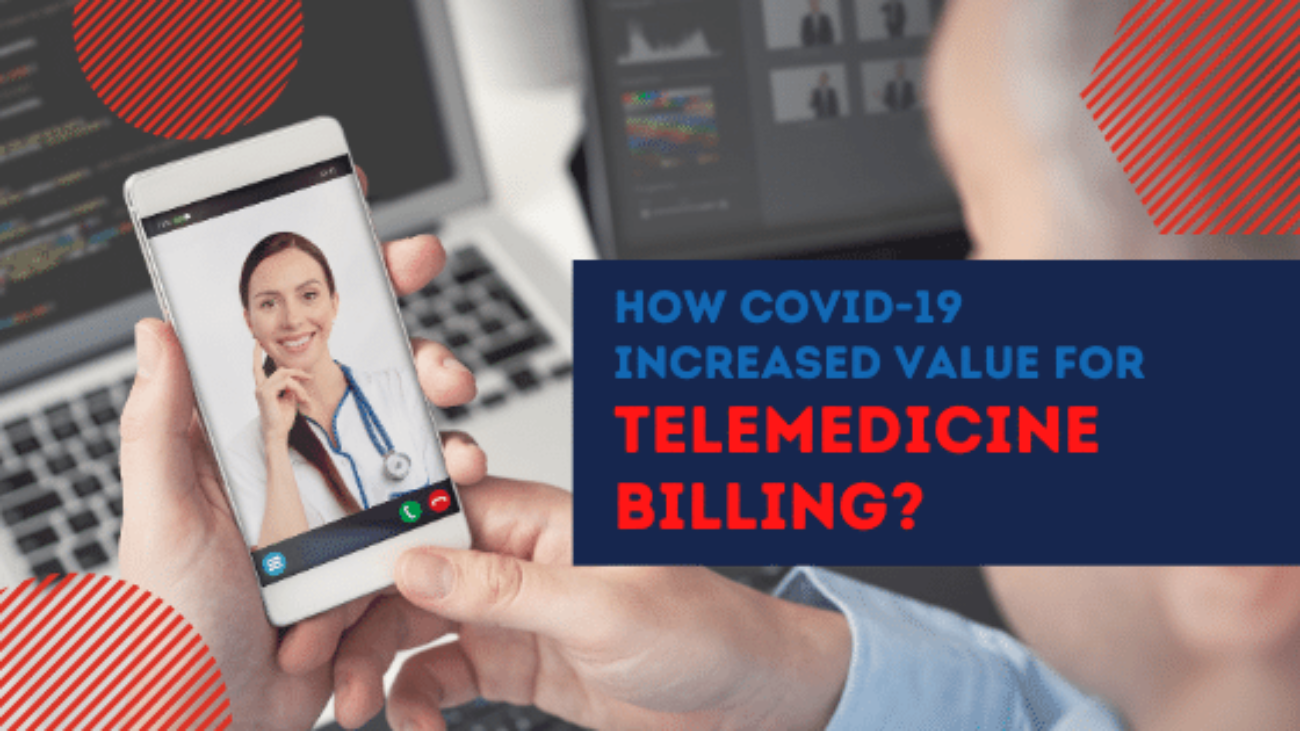Do you think the current pandemic has added more value for telemedicine services? Is it time to accept that telemedicine billing meets the necessities of healthcare professionals in terms of adding extra bonanza to their services? Guess we found positive answers for the above, as it clearly states in what situation we are right now!
Telemedicine has created an epic healthcare facility to healthcare professionals and patients to consult each other regarding patient’s requirements and health issues. Telemedicine billing has also made it simple for faster reimbursements as Centers for Medicaid and Medicare has waived off many policies for good. We can’t deny the fact that new rules and regulations has been introduced for telemedicine billing during Covid-19 emergency.
These ensure patients to have the opportunity and access to meet healthcare professionals and other providers for their medical requirements staying safe at home. In fact there are numerous services available to all the beneficiaries of Medicare that also includes telemedicine, virtual check-in, telephone visits, e-visits as well as remote monitoring of the patient.
The telemedicine services those can be usually rendered through in-patient visits including outpatient clinic visits, in-patient visits, nursing facility visits, therapy services has remained constant. During PHE services, telemedicine services have been expanded. In addition to this, the rules which were targeting locations and telecommunications equipment for telemedicine services and types of providers allowed to render telemedicine has also been waived off.
Telemedicine billing practices to keep in mind:
- Healthcare professionals have the facility to bill telemedicine services equal to that of in-person visits.
- Medicare copayments are waived off for the beneficiaries who avail telemedicine services.
- This refers to the healthcare professionals who can only be reimbursed what Medicare actually pays for.
- Medicare has also waived off all patient cost sharing for Covid-19 testing and telemedicine visits where coronavirus testing is ordered and performed involving tele-health visits, e-visits but not virtual check-in.
- To get total reimbursement for telemedicine billing, Medicare allows to bill modifiers CS that should be appended to telemedicine visits.
- Both new patients and established patients qualify for telemedicine billing.
- It’s evident that platform security necessities have been lifted and also virtual applications like Skype, Face time, Google Hangouts, as well as others are allowed to bill along with other telemedicine services.
- But CMS always look for real time audio with E/M visits that other insurance companies may not accept while telemedicine billing. So, it’s crucial to have regular check up on policies of commercial or private insurance companies.
- Annual consent is well obtained at the same time of telemedicine services performed by healthcare professionals.
- No location restrictions are followed for both patients and healthcare professionals.
- Telemedicine billing for E/M is based on medical decision making or time defined and time associated with E/M during the encounter.
- Especially this particular guideline is provided by CMS for outpatient E/M codes 99201 via 99215 and not addressed for others.
- Healthcare professionals must have familiar views on CPT and CMS documentation, guidelines and choose appropriate CPT codes for telemedicine billing that’s based on services provided and documented.
- According to CMS nontraditional telemedicine visits, dates of services on or after March 1st, 2020 must be filled in the place of services equal to usual circumstances.
- Modifier 95 must be appended in order to indicate telemedicine services. Whereas modifiers CR is unnecessary for catastrophe/disorder related services and not required by CMS for telemedicine billing.
Telephone visits and Virtual check-in for Telemedicine billing:
- Telephone visits and virtual check-in is based on telecommunications services for patients.
- These services are rendered usually via telephone, e-visits, audio and video secure text messages along with patient portal.
- They might also include services through captured video or images sent to the healthcare professionals, store those images and then forward.
- Virtual check-in and telephone visits are not supposed to be related to E/M services rendered in seven days or leading to E/M services or procedures in 24 hours.
- It involves 10 minutes of medical discussion or telemedicine visits.
- These services are available for new and established patients as well.
- Generally virtual check-in is billed with code G2010 or G2012 for remote evaluation of recorded video or images submitted by patients.
- Time based telephonic E/M services are reported with CPT codes 99441 to 99443.
- For broad range of other clinical types like licenses clinical social workers, psychologists, physical therapists, occupational therapists and pathologists can use the codes 98966 to 98968.
Telemedicine billing for e-visits:
- E-visits are considered as digital management/M services through online patient portal with telecommunications.
- There are two set of codes for these services that depend on type of providers.
- Providers or healthcare professionals allowed to bill with online digital E/M services can bill using the codes 99421 to 99423.
- These codes are based on cumulative time spent for visits more than seven days.
- But if you take for other healthcare professionals the codes G2061 to G2063 are billed for telemedicine services using the same criteria.
- For Medicare beneficiaries, requirements to perform in house limits and frequency limitations have been waived off.
- CMS has also released many expectations regarding physician supervision requirements and types of providers to furnish services.
- Other Medicare and Medicaid programs including commercial insurance companies have also revised telemedicine billing guidelines.
Changes in Telehealth Billing in 2022
- Medicare has asked for comments on the ‘direct supervision’ rule for the intervention of the physician during a medical consultation and service. Earlier, Medicare had issued an interim rule allowing physicians to be virtually present through real-time audio-visual pathways. They have asked for comments if this rule is to be made permanent.
- Psychology consultations at home now require a new POS code 10 instead of POS 02. However, patient consultations in the hospital would still need POS code 02.
- Remote therapeutic monitoring makes its debut in 2022. The Medicare proposed rule will significantly change the landscape of remote patient monitoring according to healthcare experts.
- RTM will include 5 treatment management service codes that you should keep an eye on. The codes are CPT code 989X1, CPT code 989X2, CPT code 989X3, CPT code 989X4 and CPT code 989X5.
- Chronic care management will see an increase in reimbursement rates. The CMS has also proposed 5 new codes for the services and new rules for improving better patient access to these services.
- The Medicare has proposed an extension of the Category 3 codes in the Physician Fee Schedule final rule. This category holds the codes that have been added temporarily till the end of the Public Health Emergency. In the 2022 final rule, the CMS has proposed that it would allow the temporary services till the end of 2023 to allow more time for the insurance panels to get required data.
Hope you got the information on Telemedicine billing. For more suggestions, please comment below, we will definitely consider them if relevant. For more queries and updates on healthcare, please subscribe to our blog.




